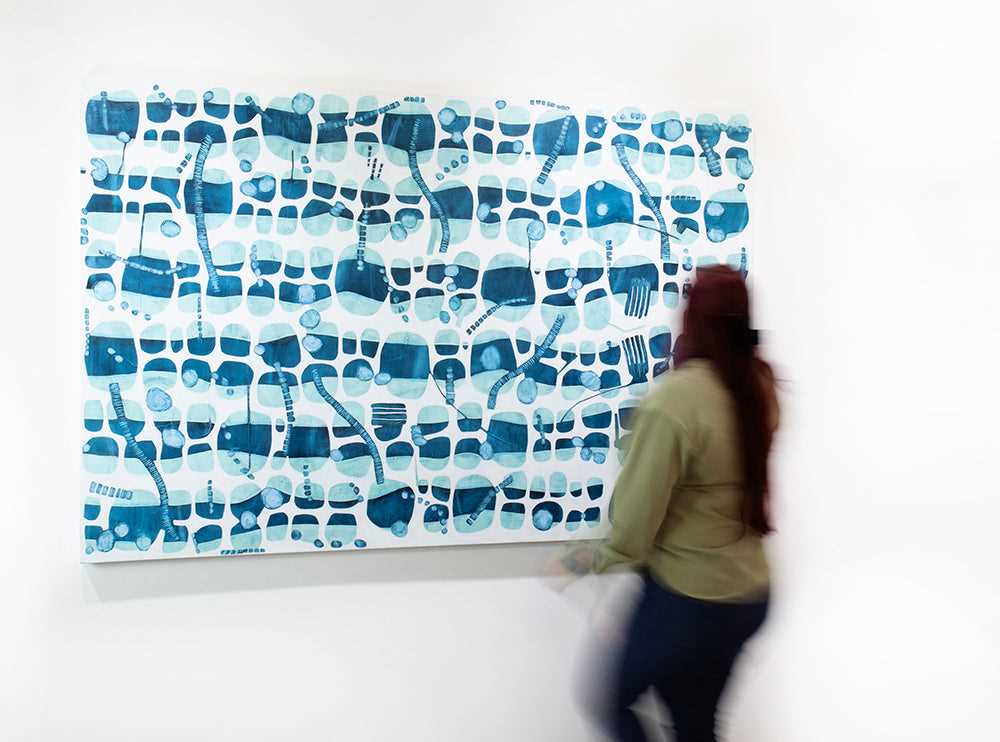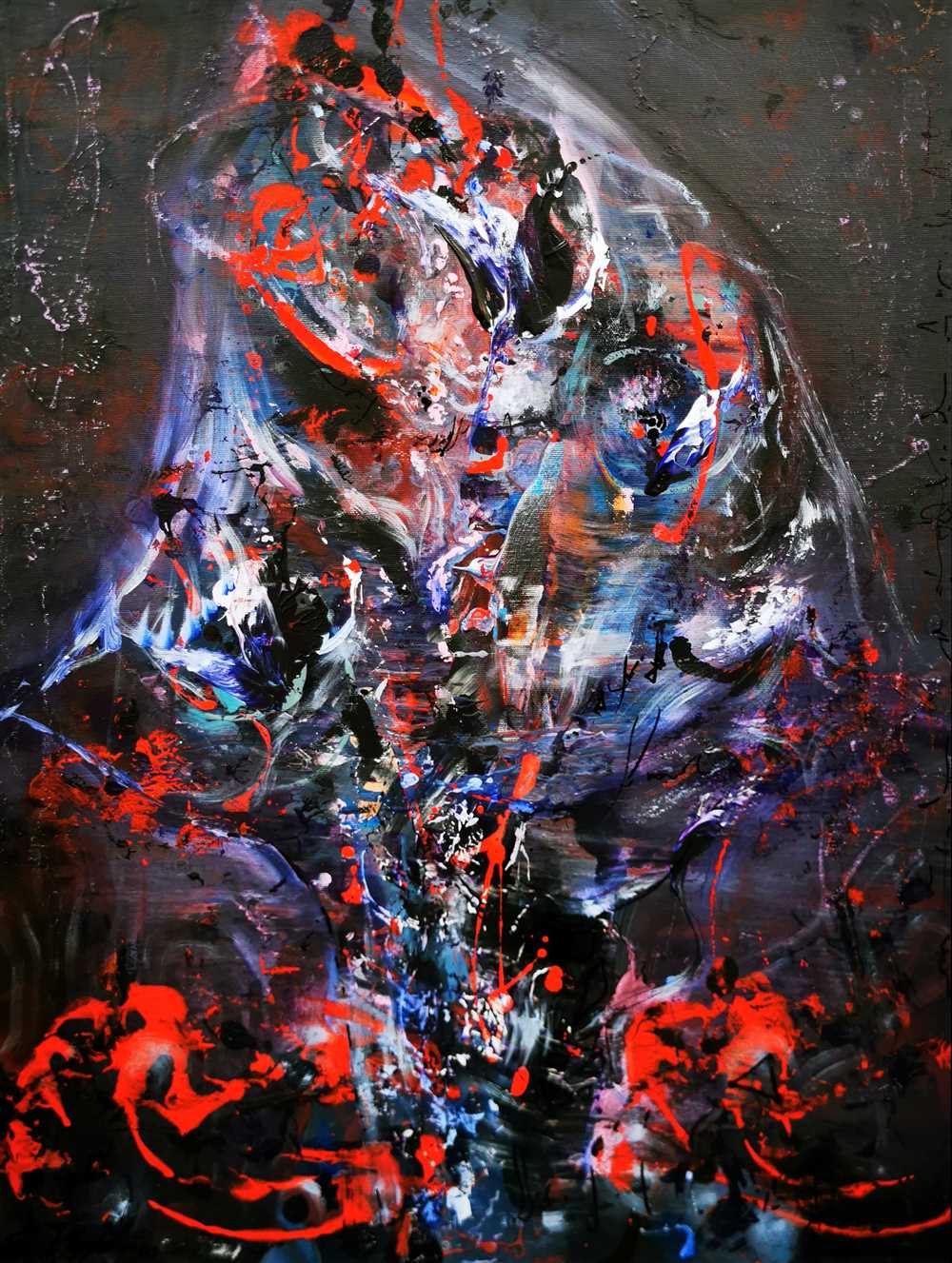
Abstract art is a fascinating genre that challenges conventional visual representation. Unlike traditional forms of art, abstract art engages viewers in a maze of emotions and thoughts, inviting them to interpret what they see on canvas. In this chaotic world, where the tangible dissolves into the intangible, abstract artists defy boundaries and explore the boundless realms of creativity.
Abstract art rejects the constraints of realistic depictions, opting for a vision that lies beyond the surface. Artists use shapes, colors, lines, and textures to convey their innermost feelings and ideas, creating a kaleidoscope of swirling impressions. By breaking away from representation, they allow viewers to tap into their own imagination, making each encounter with abstract art a deeply personal and unique experience.
Abstract art can be mesmerizing, overwhelming, and even perplexing, as it unfolds before us like an enigmatic puzzle. Instead of portraying recognizable subjects, it captures the essence of emotions, thoughts, and concepts. Within the layers of paint and spontaneous gestures, hidden stories come alive, telling tales only the viewer can fathom. In this world of ambiguity and mystery, abstract art encourages us to delve into the unknown and embrace the chaos.
Evoking Emotion through Abstraction
Abstract art is known for its ability to evoke a wide range of emotions in viewers. Through the use of color, form, and composition, abstract artists often aim to create a visceral response from their audience. Whether it’s a sense of joy, sadness, confusion, or excitement, abstract art has the power to stir emotions that defy verbal description.
The Power of Color

One of the main ways abstract artists evoke emotion is through the use of color. Each color has its own psychological associations, and artists strategically choose hues to create a desired emotional impact. Warm colors such as red, orange, and yellow can generate feelings of energy and warmth, while cool colors like blue and green can create a sense of calmness or sadness. Artists may also use contrasting colors or unexpected color combinations to produce a sense of tension or surprise in the viewer.
The Impact of Form and Composition
In addition to color, abstract artists use form and composition to evoke emotion. The arrangement of shapes, lines, and textures can create a sense of movement, balance, or chaos. Artists may choose to create harmonious compositions that elicit a feeling of tranquility, or they may deliberately disrupt traditional compositional rules to provoke a sense of unease or confusion. The manipulation of form and composition allows abstract artists to guide the viewer’s emotional response and create a unique and personal experience.
Overall, abstract art provides a unique opportunity for artists to tap into the viewer’s emotions. By using color, form, and composition, abstract artists can create powerful and evocative works that transcend language and communicate on a deeply emotional level.
The Influence of Abstract Expressionism
Abstract Expressionism, which emerged in the mid-20th century, had a profound influence on the world of art and continues to be celebrated for its unique approach and impact.
One of the major effects of Abstract Expressionism was its rejection of traditional forms and techniques. Artists like Jackson Pollock and Willem de Kooning embraced a spontaneous and intuitive process, creating works that emphasized emotional and gestural expression. This departure from representational art opened new possibilities for artists and challenged the notion of what art should be.
Abstract Expressionism also had a significant impact on subsequent art movements. Its focus on the artist’s individual emotions and experiences paved the way for the development of other movements such as Color Field painting and Minimalism. Artists like Mark Rothko and Barnett Newman explored the power of color and shape, while others like Donald Judd and Dan Flavin simplified forms and materials in their works.
The Sublime and the Spiritual
Abstract Expressionism also brought a renewed interest in the sublime and the spiritual in art. Many artists sought to capture something beyond the physical world, aiming to elicit profound emotional responses from viewers. The large-scale canvases and bold brushstrokes of Abstract Expressionist works were intended to overwhelm and transport the viewer, creating a transcendent experience.
An International Movement
Despite its origins in the United States, Abstract Expressionism quickly gained international recognition and had a lasting impact on artists and art scenes around the world. Its influence could be felt in Europe, with artists like Jean-Paul Riopelle and Pierre Soulages embracing the freedom and expressive qualities of the movement. In Asia, artists like Zao Wou-Ki and Chu Teh-Chun incorporated the principles of Abstract Expressionism into their work, merging Eastern and Western artistic traditions.
In conclusion, Abstract Expressionism revolutionized the art world and continues to be a significant influence on contemporary art. Its rejection of traditional forms and techniques opened new avenues for artistic expression and its emphasis on emotion and spirituality continues to resonate with artists and audiences alike.
Breaking Boundaries with Conceptual Art

Conceptual art is a genre that pushes the boundaries of traditional art forms and challenges the viewer’s perception of what art can be. Rather than focusing on the aesthetic qualities of a piece, conceptual artists prioritize the idea or concept behind it.
The Power of Ideas
In conceptual art, the idea takes precedence over the visual execution. Artists aim to convey their message through thought-provoking concepts, often using non-traditional materials or methods. This shift away from traditional art materials and techniques allows for a broader range of expression and exploration.
Conceptual artists often strive to engage the audience in a more active way, encouraging them to think critically about the underlying message of the artwork. By breaking free from the constraints of traditional art forms, conceptual artists have the freedom to explore a wide range of themes and ideas that may not be easily conveyed through more traditional mediums.
Pioneers of the Conceptual Art Movement
The conceptual art movement emerged in the 1960s as a response to the formalism and commercialization of the art world. Artists such as Marcel Duchamp, Yoko Ono, and Sol LeWitt played pivotal roles in challenging the established norms of art-making.
Duchamp, for example, is famous for his readymades, everyday objects he transformed into works of art simply by recontextualizing them within an art gallery setting. This subversion of traditional artistic conventions raised questions about the nature and value of art.
| Artist | Key Contribution |
|---|---|
| Marcel Duchamp | Introduced the concept of readymades and challenged traditional notions of art |
| Yoko Ono | Pushed boundaries with performance art and interactive installations |
| Sol LeWitt | Emphasized the importance of the idea in art-making and introduced the concept of instructions for art production |
These artists and many others paved the way for the development of conceptual art, opening up new possibilities for artistic expression and challenging the traditional definition of art.
The Endless Possibilities of Abstraction

Abstract art opens up a world of limitless possibilities, where the only boundaries are the artist’s imagination. With its departure from representational forms, abstraction allows artists to break free from traditional conventions and explore new realms of creativity.
Breaking the Boundaries
One of the most fascinating aspects of abstraction is its ability to transcend the confines of reality. By distorting, simplifying, or exaggerating forms, abstract artists can convey emotions, ideas, and sensations that cannot be easily expressed through realistic representations. This freedom opens up a whole new visual language, where shapes, colors, and textures become the primary means of communication.
Abstract artists have the power to evoke strong feelings and provoke deep introspection by stripping away the familiar and presenting the viewer with something unexpected. Whether through bold brushstrokes, vibrant palettes, or playful compositions, abstraction invites us to see the world in a different light and encourages us to question our perceptions.
Unleashing the Imagination
Abstraction also allows artists to tap into their subconscious and intuition, creating works that are deeply personal and reflective of their innermost thoughts and emotions. By liberating themselves from the constraints of representation, they can explore the depths of their imagination, allowing their creative energy to flow freely and uninhibited.
Through abstraction, artists can experiment with different techniques, materials, and mediums, pushing the boundaries of what is possible in the world of art. They can explore the interplay between colors and shapes, the juxtaposition of textures, and the rhythm of lines, creating mesmerizing compositions that captivate and engage the viewer.
Moreover, abstraction invites viewers to actively participate in the artistic experience. Without the constraints of recognizable subject matter, abstract art encourages individual interpretation and sparks dialogue. Each viewer can bring their own unique perspective, filling in the gaps and finding personal meaning in the abstract forms before them.
Conclusion

In the vast realm of abstract art, the possibilities are truly endless. From bold, dynamic compositions to gentle, subtle expressions, abstraction offers a world where imagination knows no limits. By venturing beyond the boundaries of reality, abstract artists invite us to explore, question, and engage with the art in ways that are as diverse and varied as the human experience itself.
What is abstract art?
Abstract art is a form of art that does not attempt to represent an accurate depiction of visual reality. It uses shapes, colors, forms, and gestural marks to achieve its effect, often resulting in non-representational and non-objective artwork.
What is the significance of abstract art?
The significance of abstract art lies in its ability to challenge and provoke viewers, allowing them to interpret and engage with the artwork on a personal level. It encourages new ways of thinking and offers a platform for experimentation and conceptual exploration.








Leave a Reply